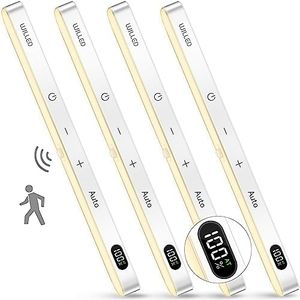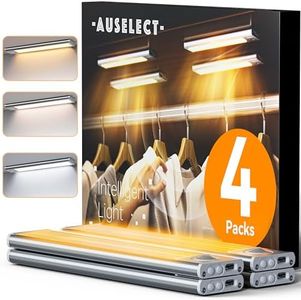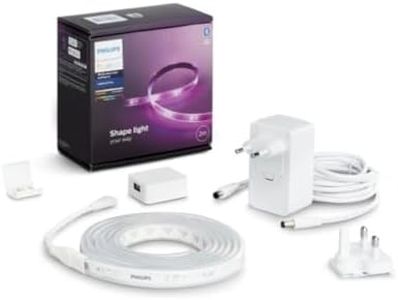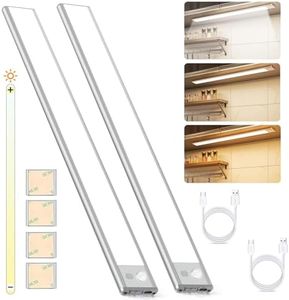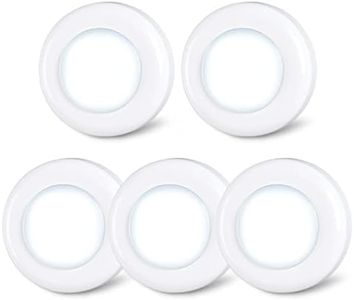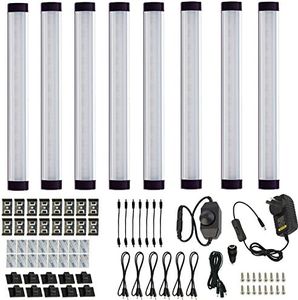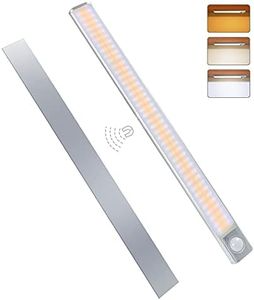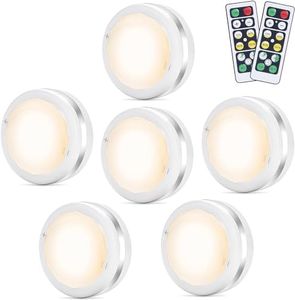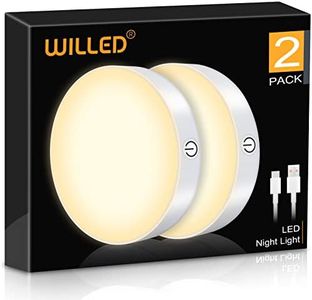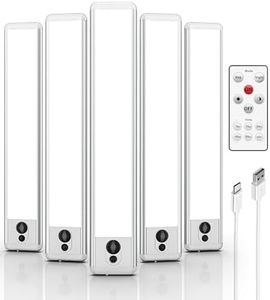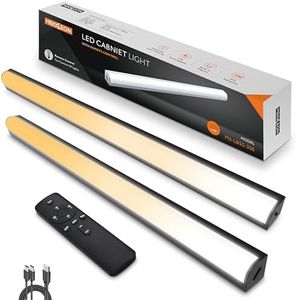We Use CookiesWe use cookies to enhance the security, performance,
functionality and for analytical and promotional activities. By continuing to browse this site you
are agreeing to our privacy policy
10 Best Under Cabinet Lighting
From leading brands and best sellers available on the web.By clicking on a link to a third party's website, log data is shared with that third party.
Buying Guide for the Best Under Cabinet Lighting
When choosing under-cabinet lighting, you're aiming to both enhance the look of your kitchen or workspace and make tasks like chopping, reading recipes, or working more comfortable. The right lighting can make a space feel warmer, brighter, and more efficient. There are several types and features to consider, each suiting different needs and preferences. To make the best choice, think about how much light you want, where you'll install the lights, how visible you want the fixtures to be, and how you'll control them.Light Type (LED, Fluorescent, Xenon, Halogen)This refers to the technology used to create light. LED is most popular due to its energy efficiency, long life, and cool operating temperature. Fluorescent lights give a broad, soft light and are also efficient, but aren’t as long-lasting as LEDs. Xenon and halogen provide warmer, more natural light but run hotter and use more energy. If you want low maintenance and energy savings, go for LED. If your priority is a warmer, more traditional glow, you might consider xenon or halogen, but always factor in the additional heat and less efficiency.
Brightness (Lumens)Brightness is measured in lumens and tells you how much light the fixture produces. Lower lumens (under 150 per foot) give a subtle, accent light good for ambiance. Medium lumens (150-250 per foot) are suitable for most food prep and reading tasks. Higher lumens (250+ per foot) are chosen for bright task areas or darker kitchens. If you only want a gentle glow, go lower. For clear, functional lighting, go for medium to high brightness, especially over workspaces.
Color Temperature (Kelvin)Color temperature describes the shade of white light. Warm white (2700K-3000K) is soft and cozy, great for creating a welcoming feel. Neutral white (3500K-4000K) strikes a balance and suits modern kitchens for both looks and functionality. Cool white (5000K+) is crisp and daylight-like, ideal for work-centered areas but can feel too stark in relaxed settings. Choose warmer light if you mainly want atmosphere, or cooler temperatures if you want clear, bright workstation light.
Installation Type (Plug-in, Hardwired, Battery-powered)This determines how the lights get power and how they're connected. Plug-in models are easy to install if you have an outlet nearby and are great for renters or quick upgrades. Hardwired lights connect directly into your home’s electrical system for a cleaner look but require more work to install (sometimes professional help). Battery-powered lights can go anywhere, no wires needed, but you’ll have to replace or recharge batteries. If you need a permanent, sleek look, choose hardwired. For flexibility, go for battery or plug-in, depending on your outlet access.
Control Options (Switch, Remote, Motion Sensor, Dimmable)Controls let you turn the lights on or off and sometimes adjust their brightness. Some lights have a simple manual switch, others offer remote controls for convenience, or motion sensors for hands-free use. Dimmable lights allow you to set the brightness just right for different tasks or moods. Think about how often you’ll adjust the lights—if you want easy access, remote or dimmable features are worth it. For utility spaces, motion sensors may be most useful.
Size and ShapeUnder-cabinet lights come in bars, strips, or puck shapes. Bars and strips give even lighting over wider areas, while puck lights give focused spots of light. You’ll want to match the size to your cabinets: long bars or strips for a seamless look under bigger cabinets, and pucks or smaller strips for corners or small spaces. Measure your space before buying to ensure a tidy fit and even coverage.
Ease of InstallationSome lights can be stuck on with adhesive or mounted with screws, while others need more involved wiring. If you aren’t comfortable with electrical work, look for options designed for simple install. If a clean and permanent look matters most, you might invest time or hire help for a hardwired solution.
